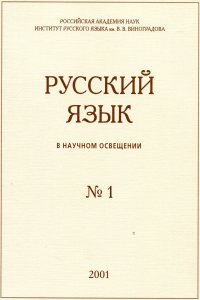Grammatical features of the Trebnik by Nikon (1658) against the background of the previous Church Slavonic liturgical tradition of the 15th–17th centuries (on the material of some lities)
Abstract:
The study expands the range of sources compared to those traditionally used to resolve
the issue of the sources of Nikon’s book correction. The grammatical features of
the four lities in Nikon’s Trebnik of 1658 are considered in comparison with the same
texts in the early revisions of the 14th century, the southwestern revisions (by Hedeon
Balaban and Peter Mohyla) of the first half of the 17th century and Moscow pre-Nikon
printed Trebniks (1639 and 1651), with consideration to the Greek original of the lities
according to the Venetian edition of 1602.
In the course of the comparison, a number of consistent linguistic correspondences
were revealed, which can be considered as characterizing the Nikonian revision of the
Trebnik against the background of the previous tradition. The range of these phenomena
is wider than that revealed by previous researchers who relied on the data of “corrected”
copies of Nikon's Trebnik. At the same time, the choice of the language variant in this
edition was influenced by the revisions belonging to different territorial Church Slavonic
usages, by no means limited to the southwestern version or the grammar of the Greek
original: the Moscow old printed revision of the second third of the 17th century (endings
-y, -i in gen. sg. of feminine and masculine nouns fnd in nom.-acc. pl. feminine and
acc. pl. masculine nouns of the soft inflexion pattern of the 1st declension; the formant
-ite in the imperative), southwestern Russian revision as edited by Peter Mohyla (l-form
with a copula in 2 sg. to express the past tense) and Athos revision of the 14th century
(a reflexive verb in place of the analytic passive; pronouns togo / jego ‘him’ for expressing
the 3rd person; construction da + indicative rendering the Greek construction ἵνα +
conjunctive). The main factor determining the use of the grammatical forms and constructions
in the Trebnik of 1658 which are considered in the article is the elimination of
variability.


